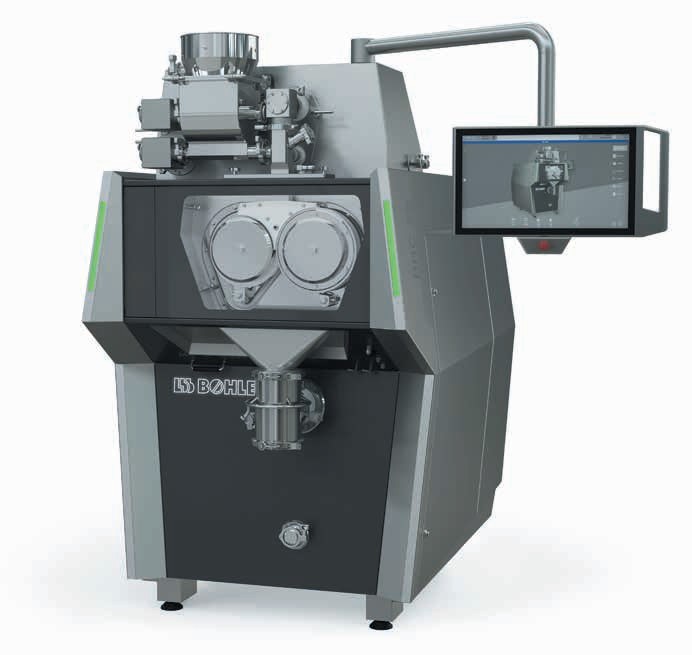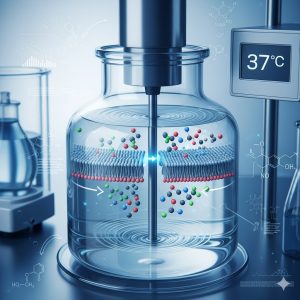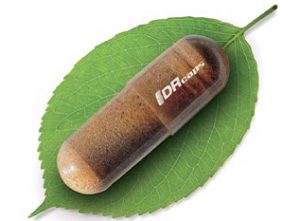When developing a tablet, three widely used technologies are often considered to produce solid dosage forms: direct compression, wet granulation and dry granulation. Wet granulation remains the most widely used method, but it has got limitations regarding moisture- and heat-sensitive drugs, coupled with costly, labor-intensive, and time-consuming processes.
Continuous dry granulation or roller compaction has been a well-established method in the pharmaceutical business for decades, and it is used for more than just moisture and temperature-sensitive products. It offers several advantages to manufacturers such as overall cost-of-goods, energy consumption and/or environmental impact, as well as the potential to scale-up from development to full-scale cGMP commercial production using the same equipment.
Dry Granulation in different industries
In the pharmaceutical industry, the dry granulation process is essential for the production of tablets, capsules, pills and effervescent dosage forms. In recent years, dry granulation applications have gained more attention due to their efficiency and the push toward continuous manufacturing.
Dry granulation is used in the food industry to produce a wide variety of products, including: nutritional supplements, vitamins, spices, additives and flavors, soups and sauces.
In recent years, the nutraceutical industry has become increasingly important. In the nutraceutical industry, dry granulation is used to produce dietary supplements, including: multivitamin supplements, herbal extracts, or protein powders. The resulting granules are then compressed into tablets or capsules.
Dry granulation also plays a key role in the chemical industry by improving handling and storage properties, making it the perfect approach for producing non-clumping anti-caking agents, food additives and catalysts. It also improves the cleaning performance of detergent powders.
Fertilizers, pesticides and other insecticide powders are routinely processed for agricultural purposes. Thus, dry granulation process is a common practice in agricultural industry. It also improves agricultural powder properties and reduces quality variations.
How does the machine work?
During roller compaction, a blend of the API and intragranular excipients is passed between two counter-rotating rollers to generate ribbons. In the roller compactor, the blend experiences increasing pressure, reaching a peak before ribbon release.
The goal of granulation is to take fine, non-compactable powders and turn them into coarser agglomerates that can be pressed into tablets. Agglomerates can be composed of dry, solid granules, where each granule represents an agglomerate of primary particles with sufficient solidity.
In the dry granulation process, agglomerates are created through mechanical pressure alone.
Dry granulators differ in their roller arrangement: there are systems with horizontal, vertical and inclined rollers.
Horizontal rollers have the advantage that the screws are better ventilated and the flakes are discharged over a short distance. The space between the rollers is divided into three zones. In the sliding zone, the particles are pre-compacted. In the compaction zone, the main compaction of the particles is achieved by deformation or particle breakage (depending on the material). The third zone is the material discharge
Another difference is whether the gap is variable or not. In variable gap dry granulators, continuous measurements ensure that the gap between the rollers is always parallel. In addition, the screw speed and gap adjustment are linked so that when the gap opens, the screw transports less material into the gap and the gap closes again. This automatic control produces flakes of defined thickness and porosity across the entire width of the roll.
The powder is compacted between two rollers with specified gap widths. The impact on the rollers, as well as the gap width, is monitored via sensors and there is also the option to install process analytical technology (PAT). All data are integrated into a control circuit to ensure continuous process quality, while an electromechanical drive provides precise and fast control. The chopper unit below the compacting rollers processes flakes into a granule at a defined granular size, and the unit is equipped with a conical sieve with replaceable inserts for different particle sizes. Even at high material throughputs, the cone-shaped sieve and its inserts gently crush the ribbons into granules with the desired particle size distribution.
The milling step has a substantial impact on the particle size of the granulate. L.B. Bohle (Ennigerloh, Germany) offers a variable sieve setup for their BRC dry granulators. Milling the flakes into a granule with the desired range of particle dimensions is performed by the conical Bohle Turbo Sieve Mill (BTS) and sieve inserts with very little waste – even at a high throughput rate. Every BRC can be re-fitted in a matter of minutes to serve as an alternative oscillating sieve and adapted flexibly to the process and flake conditions.
Electro-mechanical drive instead of hydraulic systems
Similar to the automotive industry, manufacturers of pharmaceutical machinery are turning to alternative drives instead hydraulic systems. L.B. Bohle relies on electromechanical drive systems for its BRC series dry granulators. This is a sustainable and resource-conserving approach, as there is no need for regular oil changes. In addition, the properties of the oil change over time: the aging of the oil and the control valves can have a negative effect on the compressibility and therefore the precision of the system. Eliminating oil drives is also less energy intensive because they do not need to be cooled during the process. Oil leaks in the cleanroom are also eliminated.
Hygienic Design, operator-friendliness and ease of use
L.B. Bohle´s BRC 25 and BRC 100 are flexible and mobile plug & play machines. All components are integrated in the system and an external control cabinet is not required. Due to the low height, the machines do not require a ladder or step which is needed by some other machines found on the market.
The hygienic design strategy from concept to implementation guarantees optimized accessibility to all process relevant parts regards cleaning and assembly, disassembly. Virtually tool-less assembly/disassembly can be done in less than 10 minutes.
The machines are built in 100 % stainless steel with no use of plastic part. Easy fast and effective cleaning is realized by a WIP (Washing in place) cleaning as standard. Simple cleaning from the outside is also guaranteed.
The large front door enables convenient access and an opening in seconds. Due to a tongue and groove connection the rolls can be positioned easily. For roll positioning a cost-intensive handling aid is not needed.
High flexibility in throughput and integration
Dry granulators are suitable for both large and small batch sizes. The BRC granulators enable a product capacity, capable of handling a production range of less than 1 to 400 kg/h.
Although roller compaction is a continuous manufacturing process, all machines can be used as a stand-alone machine that produces a wide range of tablets in a batch format.
Beside the use as a stand-alone unit, the BRC roller compactor can be easily integrated into other (interlinked) systems, such as continuous manufacturing systems that produces from powder to the coated tablet.
Containment applications? No problem
Containment is an increasingly important term in the pharmaceutical industry. It describes the process of enclosing a substance in a defined space, a method of product handling suitable for protecting operators and the environment when products are highly toxic and reactive.
At the same time, containment prevents the release of dust, gases or vapors into the environment and contamination of the product.
More than 60 percent of pharmaceutical products are manufactured in the form of tablets, capsules, dragees, or the like. For newer products in particular, the active pharmaceutical ingredients (APIs) are becoming increasingly important to their efficacy. In some markets, the High Potency Active Pharmaceutical Ingredients (HPAPI) market segment is growing at double-digit rates, driven primarily by oncology drugs.
In addition to the technical production requirements, the safety of the product for the machine operator and, of course, for the patient is essential. As a result, machine manufacturers such as L.B. Bohle are constantly faced with new challenges in all toxicity classes in which customers want to use systems and processes.
Containment versions are developed to individual customer specifications with a focus on compliance up to containment level OEB 5, convenient access and easy product handling. This has necessitated many special features such as an integrated isolator unit in the compaction unit, a glove box for scab removal, and additional containment ports. In the end, suppliers offer user-friendly and low-maintenance dry granulators with very short set-up times for fully contained operation without the need to clarify and implement interfaces between system components.



